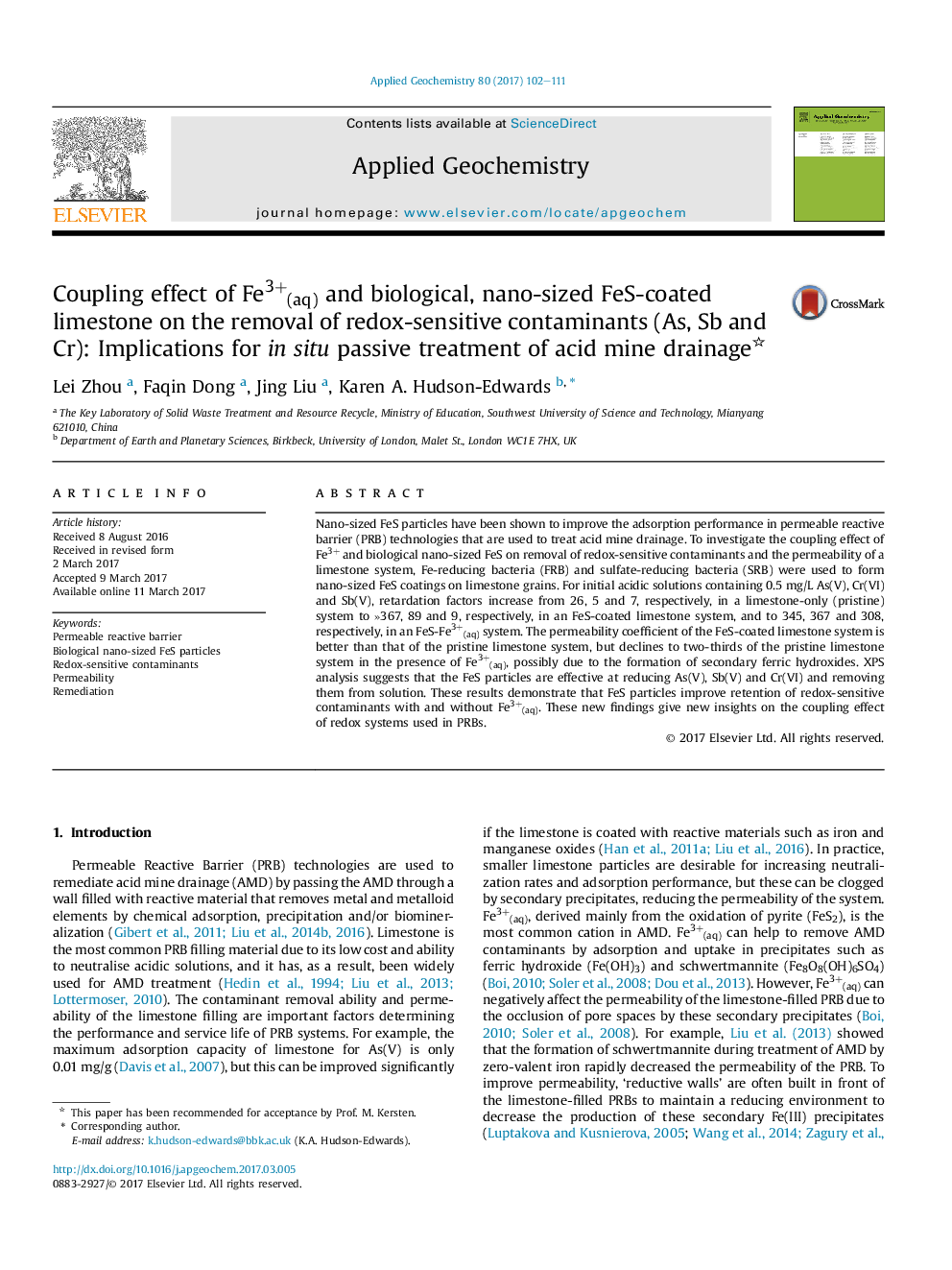| Article ID | Journal | Published Year | Pages | File Type |
|---|---|---|---|---|
| 5752585 | Applied Geochemistry | 2017 | 10 Pages |
Abstract
Nano-sized FeS particles have been shown to improve the adsorption performance in permeable reactive barrier (PRB) technologies that are used to treat acid mine drainage. To investigate the coupling effect of Fe3+ and biological nano-sized FeS on removal of redox-sensitive contaminants and the permeability of a limestone system, Fe-reducing bacteria (FRB) and sulfate-reducing bacteria (SRB) were used to form nano-sized FeS coatings on limestone grains. For initial acidic solutions containing 0.5 mg/L As(V), Cr(VI) and Sb(V), retardation factors increase from 26, 5 and 7, respectively, in a limestone-only (pristine) system to »367, 89 and 9, respectively, in an FeS-coated limestone system, and to 345, 367 and 308, respectively, in an FeS-Fe3+(aq) system. The permeability coefficient of the FeS-coated limestone system is better than that of the pristine limestone system, but declines to two-thirds of the pristine limestone system in the presence of Fe3+(aq), possibly due to the formation of secondary ferric hydroxides. XPS analysis suggests that the FeS particles are effective at reducing As(V), Sb(V) and Cr(VI) and removing them from solution. These results demonstrate that FeS particles improve retention of redox-sensitive contaminants with and without Fe3+(aq). These new findings give new insights on the coupling effect of redox systems used in PRBs.
Related Topics
Physical Sciences and Engineering
Earth and Planetary Sciences
Geochemistry and Petrology
Authors
Lei Zhou, Faqin Dong, Jing Liu, Karen A. Hudson-Edwards,
